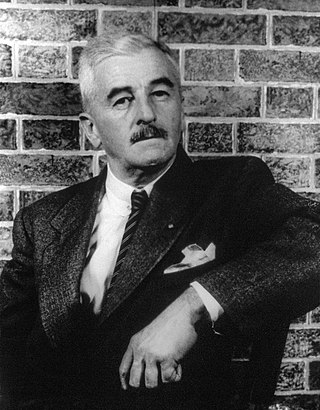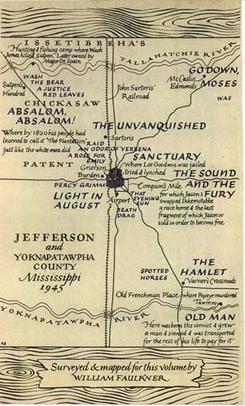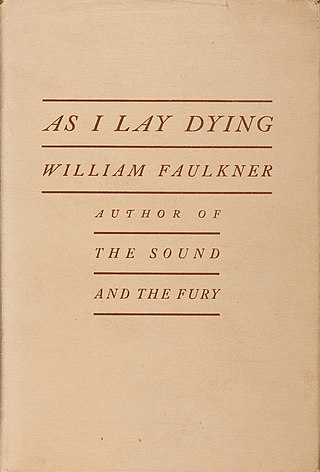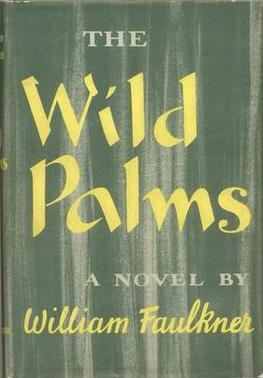
Karen Louise Erdrich is a Native American author of novels, poetry, and children's books featuring Native American characters and settings. She is an enrolled member of the Turtle Mountain Band of Chippewa Indians of North Dakota, a federally recognized tribe of Ojibwe people.

William Cuthbert Faulkner was an American writer. He is best known for his novels and short stories set in the fictional Yoknapatawpha County, Mississippi, a stand-in for Lafayette County where he spent most of his life. A Nobel laureate, Faulkner is one of the most celebrated writers of American literature and often is considered the greatest writer of Southern literature.

The Pulitzer Prize for Fiction is one of the seven American Pulitzer Prizes that are annually awarded for Letters, Drama, and Music. It recognizes distinguished fiction by an American author, preferably dealing with American life, published during the preceding calendar year.

Richard Ford is an American novelist and short story author, and writer of a series of novels featuring the character Frank Bascombe.

American literature is literature written or produced in the United States and in the colonies that preceded it. The American literary tradition is part of the broader tradition of English-language literature but also includes literature produced in languages other than English.

Yoknapatawpha County is a fictional Mississippi county created by the American author William Faulkner, largely based on and inspired by Lafayette County, Mississippi, and its county seat of Oxford. Faulkner often referred to Yoknapatawpha County as "my apocryphal county".

As I Lay Dying is a 1930 Southern Gothic novel by American author William Faulkner. Faulkner's fifth novel, it is consistently ranked among the best novels of the 20th century. The title is derived from William Marris's 1925 translation of Homer's Odyssey, referring to the similar themes of both works.

If I Forget Thee, Jerusalem is a novel by the American author William Faulkner published in 1939. The novel was originally published under the title The Wild Palms, which is the title of one of the two interwoven stories. This title was chosen by the publishers, Random House, over the objections of Faulkner's choice of a title. Subsequent editions have since been printed under the title If I Forget Thee Jerusalem, and since 2003 it is now usually referred to by both names, with the newer title following the historically first published title and in brackets, to avoid confusion: The Wild Palms [If I Forget Thee, Jerusalem].

Intruder in the Dust is a 1948 crime novel written by American author William Faulkner. Taking place in Mississippi, it revolves around an African-American farmer accused of murdering a Caucasian man.

Alice McDermott is an American writer and university professor. She is the author of nine novels and a collection of essays. For her 1998 novel Charming Billy she won an American Book Award and the U.S. National Book Award for Fiction and was a finalist for the International Dublin Literary Award and the Orange Prize. That Night, At Weddings and Wakes, and After This were finalists for the Pulitzer Prize. Her most recent novel, Absolution was awarded the Mark Twain American Voice in Literature Award.

Rowan Oak was the home of author William Faulkner in Oxford, Mississippi. It is a primitive Greek Revival house built in the 1840s by Colonel Robert Sheegog, an Irish immigrant planter from Tennessee. Faulkner purchased the house when it was in disrepair in 1930 and did many of the renovations himself. Other renovations were done in the 1950s. One of its more famous features is the outline of Faulkner's Pulitzer Prize–winning novel A Fable, penciled in graphite and red on the plaster walls of his office. It is now owned and operated by the University of Mississippi as a museum, and is open to visitors year-round.

The Hamlet is a novel by the American author William Faulkner, published in 1940, about the fictional Snopes family of Mississippi. Originally a standalone novel, it was later followed by The Town (1957) and The Mansion (1959), forming the Snopes trilogy.

The Mansion is a novel by the American author William Faulkner, published in 1959. It is the last in a trilogy of books about the fictional Snopes family of Mississippi, following The Hamlet and The Town.
Milton Lott was an author of western novels. He grew up in the Snake River Valley, in Idaho and attended University of California, Berkeley. While there he started writing his first published novel, The Last Hunt. He worked on the novel while attending an English class taught by George R. Stewart, himself a well published author. Lott received a citation from the National Institute of Letters and Arts for The Last Hunt, and was granted a Literacy Fellowship Award by Houghton Mifflin to finish the book. The Last Hunt was selected by the Pulitzer fiction jury for the 1955 Pulitzer Prize, but John Hohenberg convinced the Pulitzer board that William Faulkner was long overdue for the award, despite his submitted novel A Fable being a lesser work of his, and the board overrode the jury's selection, much to the disgust of its members. The Last Hunt was made into a 1957 movie.

William Faulkner (1897—1962) was an American writer who won the 1949 Nobel Prize in Literature. He is best known for his novels and short stories set in the fictional Yoknapatawpha County, a stand-in for his hometown of Oxford in Lafayette County, Mississippi.

The Floating Opera is a novel by American writer John Barth, first published in 1956 and significantly revised in 1967. Barth's first published work, the existentialist and nihilist story is a first-person account of a day when protagonist Todd Andrews contemplates suicide.
Popeye is a character in William Faulkner's 1931 novel Sanctuary. He is a Memphis, Tennessee-based criminal who rapes Temple Drake and introduces her into a criminal world which corrupts her.

Kingsley Widmer (1925–2009) was an American literary critic.
Miriamne Ara Krummel is an American professor of English at the University of Dayton, and a scholar of Jewish studies. She is a graduate of the University of Connecticut and has a master's degree from Hunter College and Ph.D. from Lehigh University. Her 2002 dissertation was Fables, Facts, and Fictions: Jewishness in the English Middle Ages, directed by Patricia Clare Ingham.
Fiction, Film, and Faulkner: The Art of Adaptation is a 1988 non-fiction book by Gene D. Phillips, published by University of Tennessee Press. It is about William Faulkner, his works, and film adaptations of his works.


















